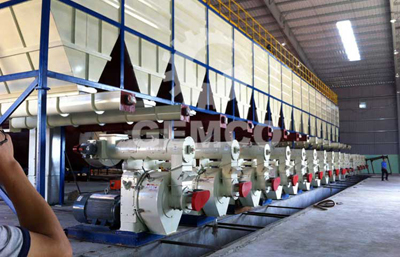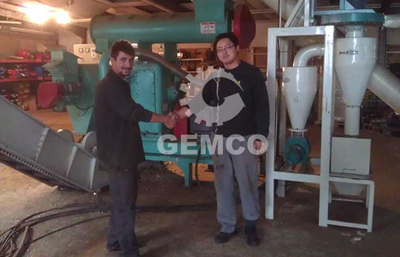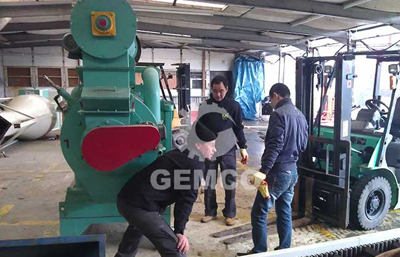How much does it cost to produce 1 ton of wood pellets?
Wood pellets are used in biomass boilers and heating stoves to replace coal. High pollutant emission restrict the use of coal, high price reduce the use of oil, so the wood pellet demand keep growing, and price rise up along with the demand.
Many people want to engage in wood pellet production to make profits. That depends on the price and cost. In China, the prices of wood pellets are from 800/ton to 1100/ton for different qualities. Then, how much does it cost to produce 1 ton wood pellets?

The production cost of wood pellets includes raw material and transportation cost, energy consumption, equipment depreciation and maintenance, labor cost, running and management cost (including tax, sales), loan and interest, etc.
Raw material cost
The purchasing price of wood materials (such as sawdust, wood chips and wood shavings) on the spot is ¥320-380/t, which will grow in the future. Let’s calculate by the price of ¥400/t. As wood materials usually contain 38% water content in average, we need to low down it to 8%. After subtracting the water weight, the unite price of wood materials is 400÷(100-38+8)×100=¥571/t.
Choosing wood materials with low moisture content can reduce the raw material cost. Setting you wood pellet factory near the raw material source and reduce the transportation cost.

Power consumption cost
The power consumption includes 2 parts, one is for the wood pellet production, the other is for the raw materials drying.
The electricity price is about ¥0.83/KWH. The unit power consumption of a wood pellet production line is about 90KWH. So the unit energy cost is 90×0.83=¥74.7/t
The drying process also require fuels. To reduce the cost, we can use wood cuts, scraps, and blocks in the raw materials as fuel. Their price is ¥340/t. To dry every 1 ton of raw materials require 0.04-0.055 tons of fuels. We can calculate by the average number 0.047. So the drying fuel cost is 340×0.047=¥15.98/t. If the raw materials moisture content is low, less fuels are required.
To sum up, the power consumption cost is 74.7+15.98=¥90.68/t
Equipment depreciation and maintenance
According to the production scale mentioned above, to produce 300 tons of wood pellets, the wearing parts cost (such as dies, rollers, lubricating oil, and sealing elements) is ¥5000. So the unit cost of wear and tear is 5000÷300=¥16.67/t
Packaging cost
For big customers, the wood pellets can be transported by tank lorries in bulks. For small and medium sized users, they must be packed in bags to prevent breaking and damp.
Usually the package volume is 25kg. 1 ton of wood pellets need 40 bags, with everyone cost 0.55. so the unit packaging cost is 40×0.55=22/t
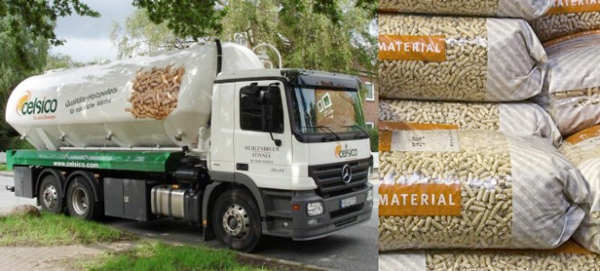
Labor cost
For this production scale, you need to hire 4 operators. One for raw materials drying and mixing, one for feeding raw materials, one for controlling the pellet machine, and one for packaging. The average worker salary is ¥2900. So, the entire labor cost is 2900×4=¥11600/month. Divided by the monthly production, the unit labor cost is 11600÷1200=¥9.6/t.
Operation and management cost
This cost includes office expenses, housing rent, meals, taxes, industry and commerce fees. This cost is hard to count, so we measure it by a typical wood pellet factory in China. It spends 20000 every month in operation and management. So the unit cost is 20000÷1200=16.67/t.
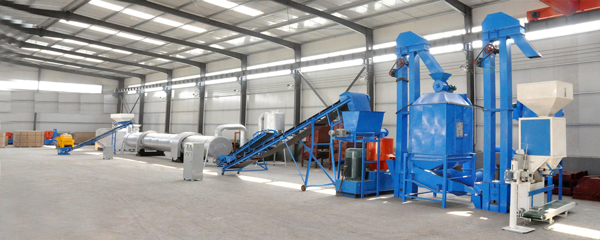
Pay loan and interests
This cost varies with different conditions of the investors. It is difficult to count. So I don’t include it into the production cost. Investors can deduct it from the revenues.
Total production cost
By adding up the costs above, we can work out the total cost for producing 1 ton wood pellets is about ¥743. This is the Break-Even Point. If the price is lower than this point, the company would suffer losses. On the premise of certain amount of profits, the reasonable selling prices should be over ¥900/t, or the company would be hard to scale up and develop technology.
On the other hand, the company can lower the production cost by reducing power consumption, improve the management efficiency. From the analysis above, we find that raw materials take up the largest cost of the production. We can reduce the raw material cost by locating the factory near the raw material source, and choosing those with low moisture content.
At last, the analysis above is based on China’s condition. The production cost varies in different places. But no matter where the factory is, these cost items are similar. By counting the unit cost of wood pellet production, you can set your selling price and production scale more reasonably.
We receive enquiries in English, Español (Spanish), Русский язык (Russian), Français (French) and العربية (Arabic). Our professional team will reply to you within one business day. Please feel free to contact us!
